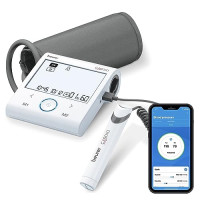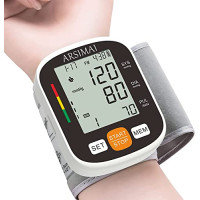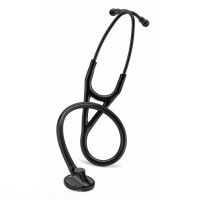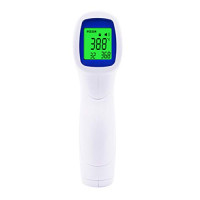Ophtalmoscope
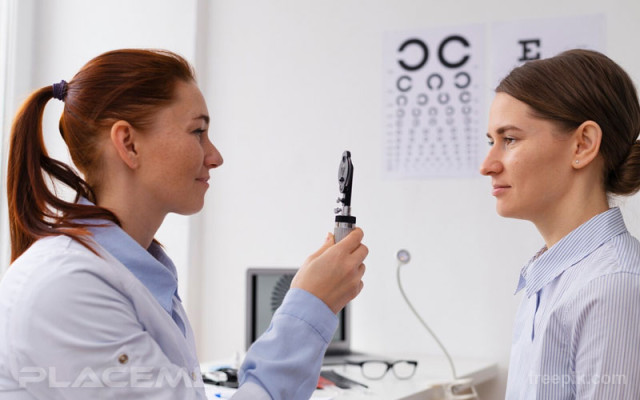
Pour vous aider à faire le meilleur choix, n'hésitez pas à consulter notre sélection sur Amazon via ce lien:
Qu'est-ce qu'un ophtalmoscope ?
Un ophtalmoscope est un instrument médical essentiel conçu pour examiner le fond de l'œil, comprenant la rétine, le disque optique, les vaisseaux sanguins et la choroïde. Utilisé principalement par les ophtalmologistes, optométristes et autres professionnels de la santé, cet outil offre une vision directe et détaillée des structures internes de l'œil, aidant au diagnostic et au suivi de diverses conditions oculaires et systémiques. Il existe plusieurs types d'ophtalmoscopes, dont les ophtalmoscopes directs et indirects, ainsi que les ophtalmoscopes à balayage laser, chacun ayant ses propres avantages et utilisations. Comprendre le rôle et l'importance de l'ophtalmoscope peut aider les professionnels de la santé à mieux surveiller et maintenir la santé oculaire de leurs patients.
Quelle est l'histoire de ophtalmoscope ?
L'ophtalmoscope est un instrument médical qui a révolutionné la façon dont nous étudions et comprenons l'œil humain. Sa genèse remonte au 19ème siècle, avec l'invention du premier ophtalmoscope par le physicien allemand Hermann von Helmholtz en 1851. Cet appareil rudimentaire utilisait un miroir concave et une source de lumière pour illuminer l'intérieur de l'œil, permettant ainsi une vision directe du fond de l'œil.
Au fil des années, l'ophtalmoscope a évolué pour offrir une meilleure visualisation de l'intérieur de l'œil. Les améliorations ont notamment porté sur le système d'éclairage, avec l'introduction des lampes électriques au lieu des bougies, et sur le système optique, pour un meilleur grossissement et une meilleure résolution de l'image.
L'introduction de l'ophtalmoscope indirect dans les années 1940 a marqué une autre étape importante. Ce modèle, qui utilise une lentille de condensation séparée, offre une vision plus large du fond de l'œil et est désormais largement utilisé dans les examens de dépistage.
Plus récemment, le développement des ophtalmoscopes à balayage laser et des systèmes d'imagerie numérique a encore repoussé les limites de l'examen oculaire. Ces technologies permettent de visualiser les structures oculaires en trois dimensions et de capturer des images détaillées pour un suivi plus précis des conditions oculaires.
Aujourd'hui, l'ophtalmoscope continue d'être un outil essentiel dans le domaine de l'ophtalmologie, aidant les professionnels de la santé à diagnostiquer et à traiter une variété de maladies oculaires et systémiques. Alors que la technologie continue de progresser, nous pouvons nous attendre à voir des améliorations encore plus importantes de cet instrument indispensable.
Quels sont les différents types d'ophtalmoscopes ?
Il existe plusieurs types d'ophtalmoscopes, chacun ayant ses propres caractéristiques distinctes :
L'ophtalmoscope direct
C'est le type le plus couramment utilisé. Il permet d'observer directement la rétine grâce à une source lumineuse et une loupe intégrées. Il offre une vue claire et détaillée de la rétine et permet de détecter des anomalies telles que des lésions, des vaisseaux sanguins anormaux ou des signes de maladies oculaires.
L'ophtalmoscope indirect
Contrairement à l'ophtalmoscope direct, celui-ci nécessite l'utilisation d'une lentille de condensation et d'une source lumineuse externe. Il offre une vue panoramique de la rétine et permet une évaluation plus globale de l'œil. Il est particulièrement utile pour examiner les patients atteints de cataracte ou d'autres conditions oculaires qui limitent la visibilité directe de la rétine.
L'ophtalmoscope à fente
Ce type d'ophtalmoscope utilise une fente étroite de lumière pour fournir une vue en coupe de différentes parties de l'œil, telles que la cornée, l'iris et le cristallin. Il est couramment utilisé pour évaluer les anomalies de la cornée, les cataractes et d'autres troubles de l'avant de l'œil.
L'ophtalmoscope binoculaire
Conçu pour une utilisation en chirurgie oculaire et en examens détaillés, l'ophtalmoscope binoculaire offre une vision stéréoscopique et une profondeur de champ améliorées. Il permet une évaluation précise de la structure de l'œil et est souvent utilisé dans les procédures complexes telles que la rétinopathie diabétique.
Comment bien choisir son ophtalmoscope ?
Lorsqu'il s'agit de choisir un ophtalmoscope, il est essentiel de prendre en compte plusieurs facteurs pour garantir des examens oculaires précis et de haute qualité. Voici quelques conseils pour bien choisir votre ophtalmoscope :
- Déterminez votre besoin : identifiez l'utilisation principale de l'ophtalmoscope. Par exemple, si vous êtes un ophtalmologiste pratiquant des examens oculaires complets, un ophtalmoscope direct ou indirect serait recommandé. Si vous êtes un professionnel de la santé qui effectue principalement des examens de routine, un ophtalmoscope direct peut être plus adapté.
- Qualité optique : assurez-vous que l'ophtalmoscope offre une qualité optique supérieure. Une bonne résolution et une clarté d'image sont essentielles pour observer en détail les structures oculaires. Recherchez des ophtalmoscopes dotés de lentilles de haute qualité pour une visualisation nette de la rétine et des autres parties de l'œil.
- Source de lumière : vérifiez le type de source de lumière utilisée dans l'ophtalmoscope. Les modèles modernes utilisent souvent des LED, qui offrent une lumière brillante et durable tout en consommant moins d'énergie. Assurez-vous que la source de lumière fournit une illumination suffisante pour des examens précis.
- Confort et ergonomie : choisissez un ophtalmoscope qui offre un bon confort d'utilisation. La poignée doit être ergonomique pour une prise en main facile et une manipulation précise. Assurez-vous que les commandes sont bien placées et faciles à utiliser pendant les examens prolongés.
- Options et fonctionnalités supplémentaires : certains ophtalmoscopes offrent des fonctionnalités supplémentaires telles que des filtres pour évaluer la vasculature, des lentilles de correction dioptrique ou des options de mise au point réglable. Évaluez ces options en fonction de vos besoins spécifiques et de la pratique clinique.
- Budget : établissez un budget raisonnable en tenant compte de la qualité et des fonctionnalités requises. Rappelez-vous que l'ophtalmoscope est un investissement à long terme, il est donc préférable de choisir un modèle de qualité supérieure qui durera dans le temps.
 English
English 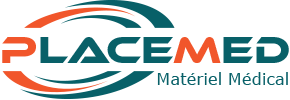
 Devis
Devis  Panier
Panier 


